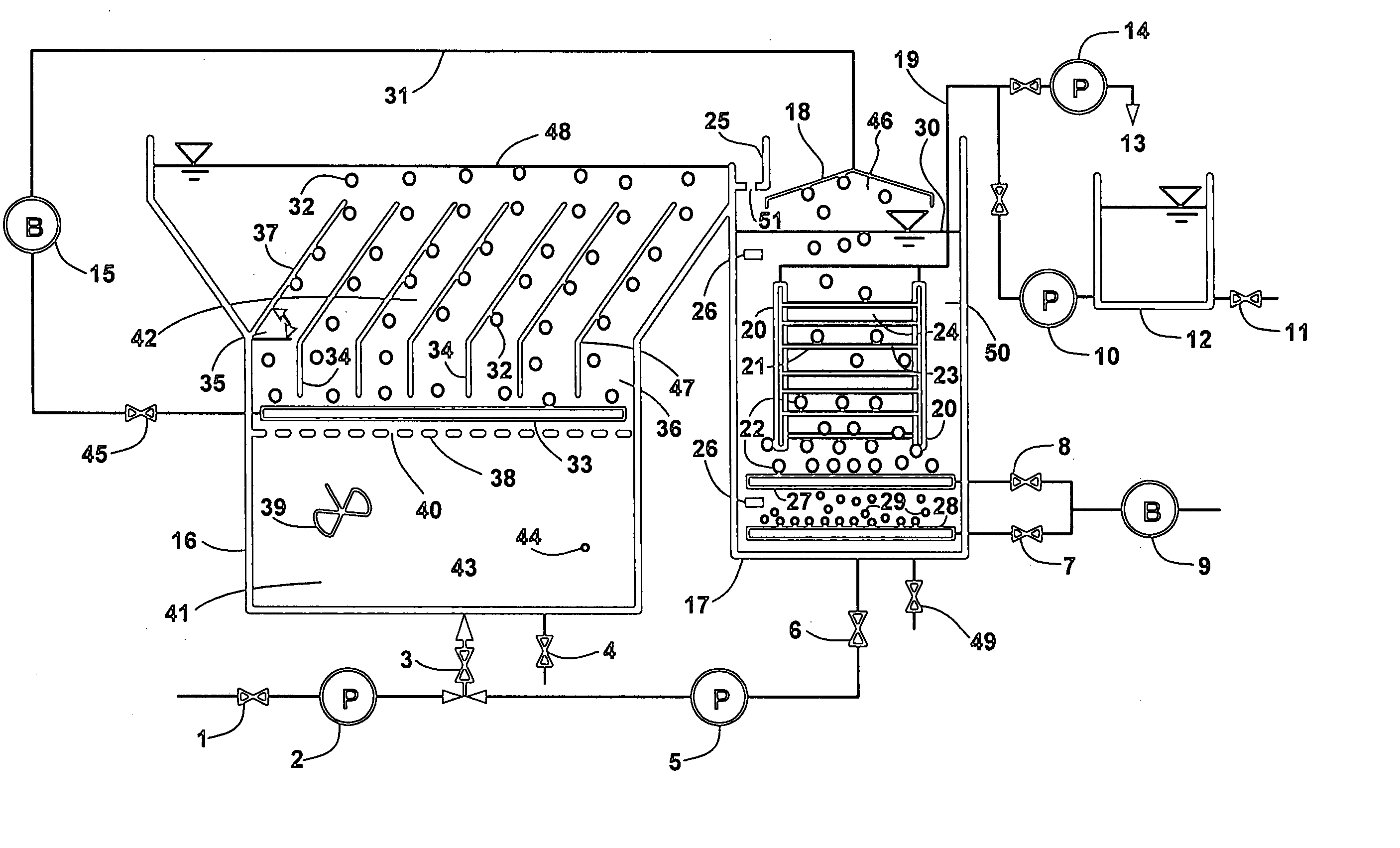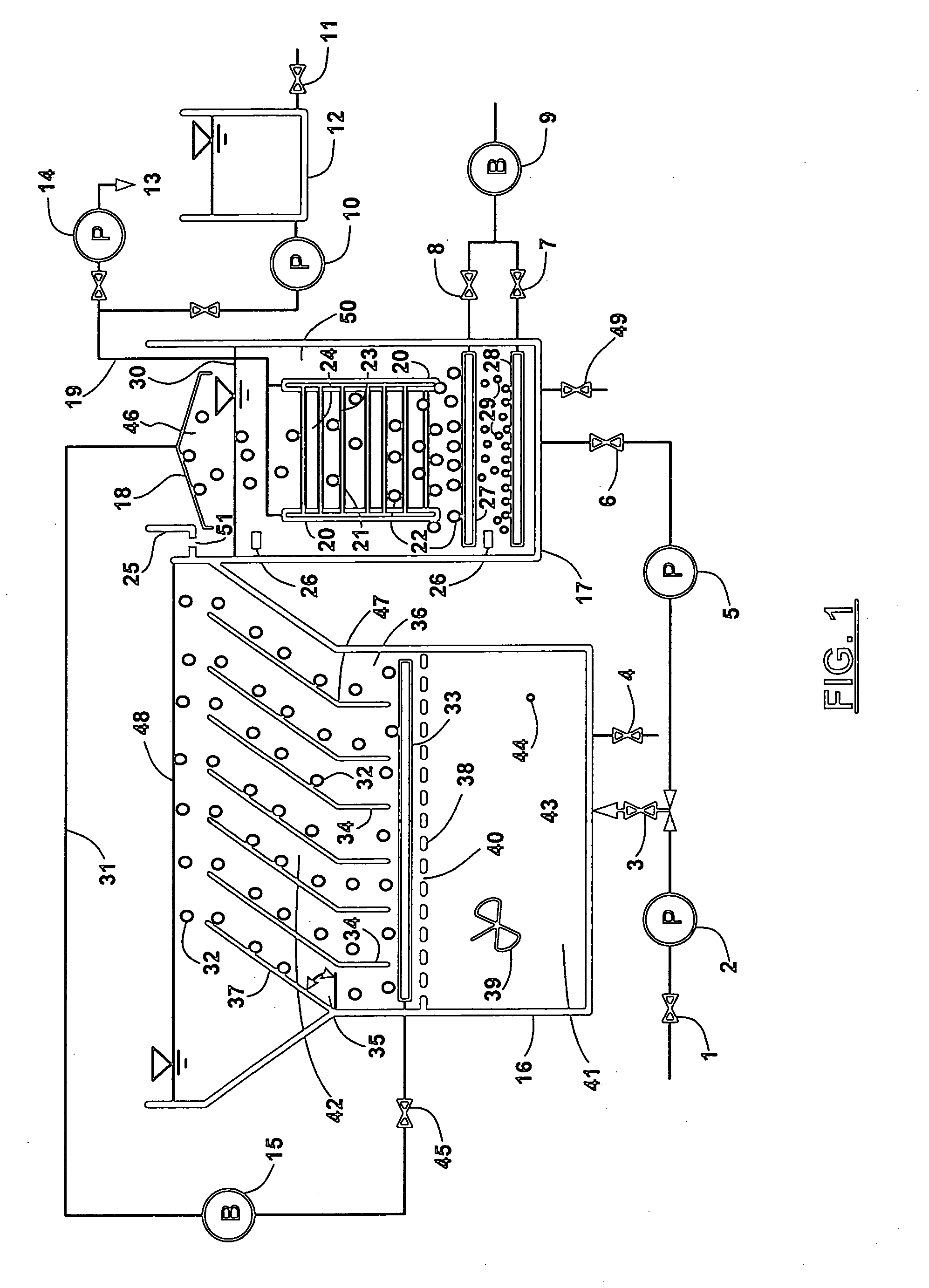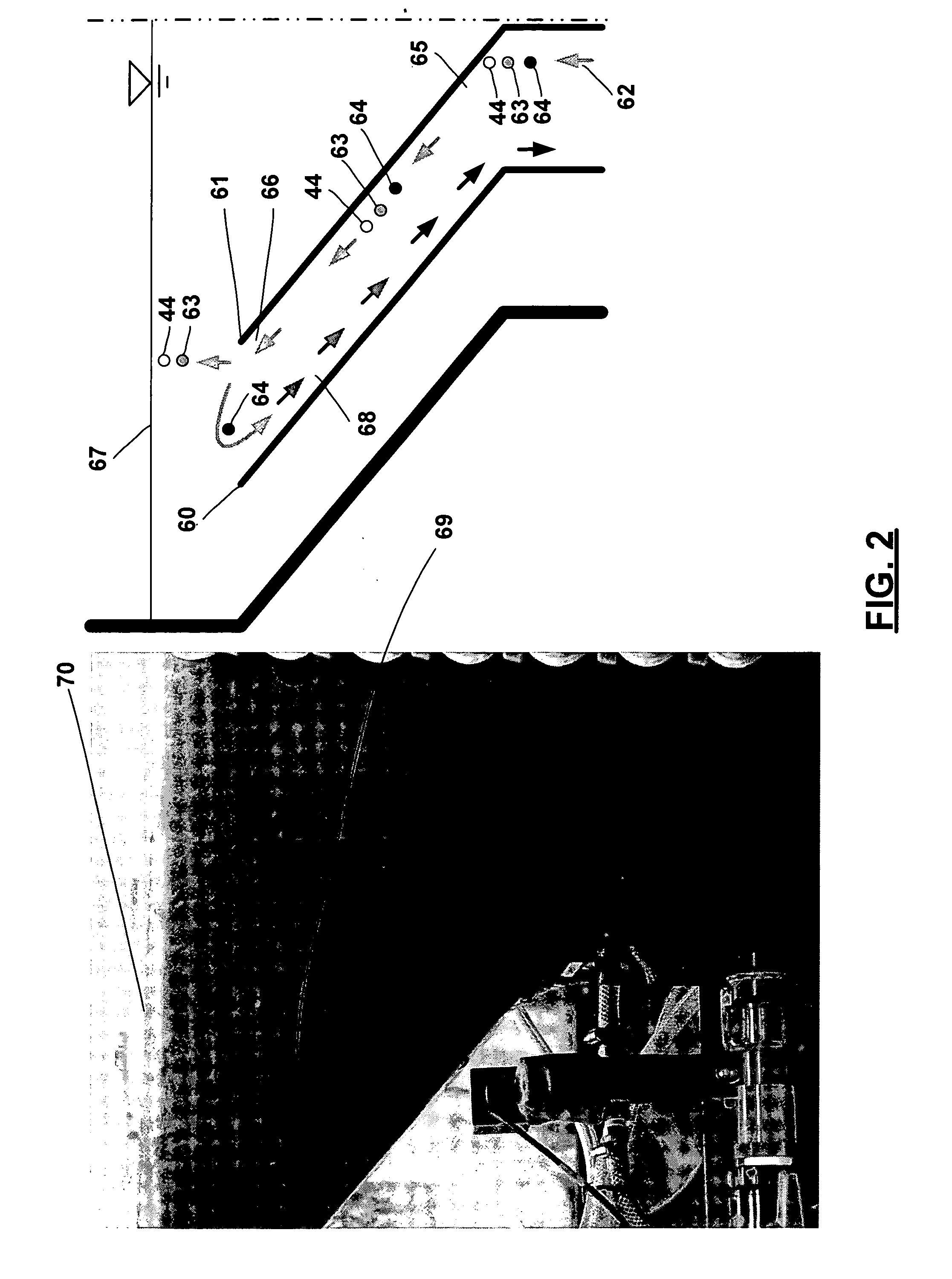Zero excess sludge membrane bioreactor
a bioreactor and sludge technology, applied in biological water/sewage treatment, sustainable biological treatment, multi-stage water/sewage treatment, etc., can solve the problems of loss of purification capacity, less effective unit process for solid-liquid separation, and increased cost, and achieve high permeation yield and cost-effective
- Summary
- Abstract
- Description
- Claims
- Application Information
AI Technical Summary
Benefits of technology
Problems solved by technology
Method used
Image
Examples
example 1
[0035] A pilot was constructed in accordance with an embodiment of the present invention (see FIG. 1). Fed with the same wastewater as that treated in a large wastewater treatment plant in Tokyo, the said pilot was operated for 120 days. The anoxic bioreactor had a volume of 30 L and a HRT of 3 hours and was outfitted with 7 inclined plates arranged in parallel. The aerobic bioreactor had a volume of 30 L and a HRT of 3 hours and was furnished with a module of hollow fiber membranes having a surface area of about 1 m2. The dissolved oxygen in anoxic bioreactor varied from 0.1 mg / L to 0.4 mg / L and in aerobic bioreactor, it was at most times fine-tuned within the range of 2.0 mg / L up to 4.0 mg / L. There was no discharge of excess sludge throughout the whole experiment except the amount for sludge sampling up to 200 mL per day. More specifically, the feed water had the following characteristics:
AverageRangeCOD, mg / L178 46-298Total Nitrogen, mg / L as N24.76.0-50 Ammonia, mg / L as N18.1 3...
example 2
[0041] A batch test was conducted with the same pilot illustrated in FIG. 1 to investigate the variation of weir MLSS over a single cycle of air blowing. During the batch test, the cycle ratio remained constant at 300%. The anoxic sludge had an average concentration of 9.45 g / L as MLSS while the air blowing was set at 10 L normal air 20° C. per minute for a 2-minute ON and 60-minute OFF cycle. As shown in FIG. 10, the weir MLSS became relatively stable within 5 minutes since the air blowing stopped, indicating that the anoxic sludge sedimentation could occur very fast with the aid of inclined plates. The average of weir MLSS over the 60-minute OFF cycle was found to be about 4.8 g / L, which further confirmed the effectiveness of the inclined plates as a settling promoter.
example 3
[0042] Another batch test was conducted with the same pilot illustrated in FIG. 1 and aimed at the vertical distribution of anoxic sludge concentration in the 60-minute OFF air blowing cycle. Prior to this batch test, the pilot fed with actual wastewater had been in operation for about three weeks. The HRT was kept at 10 hours and no excess sludge was discharged except for grab sampling at a flowrate of 40 mL / day. At the time of batch test, average sludge concentration was approximately 10 g / L as MLSS in the anoxic bioreactor. Air blowing was actuated at 12 L normal air 20° C. per minute for a 2-minute ON and 60-minute OFF cycle. FIG. 11 shows a typical profile of vertical distribution of anoxic MLSS and indicates that two poles of anoxic MLSS, namely the lowest of 2.5 g / L and the highest of 15.7 g / L, were identified at the top surface and the bottom area. Along the up-to-down of an inclined plate, there was a gradual increase in anoxic MLSS resulting from gravity sedimentation. Aft...
PUM
 Login to View More
Login to View More Abstract
Description
Claims
Application Information
 Login to View More
Login to View More - R&D
- Intellectual Property
- Life Sciences
- Materials
- Tech Scout
- Unparalleled Data Quality
- Higher Quality Content
- 60% Fewer Hallucinations
Browse by: Latest US Patents, China's latest patents, Technical Efficacy Thesaurus, Application Domain, Technology Topic, Popular Technical Reports.
© 2025 PatSnap. All rights reserved.Legal|Privacy policy|Modern Slavery Act Transparency Statement|Sitemap|About US| Contact US: help@patsnap.com



